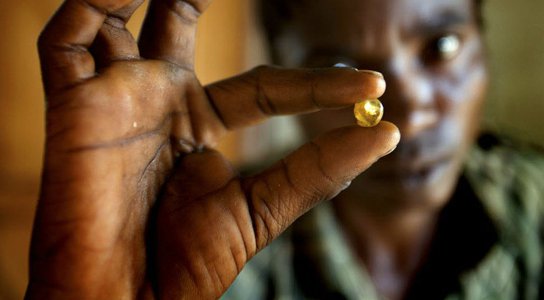The recent launch by the Diamond Producers Association (DPA) of a new advertising slogan ‘Real is rare. Real is a diamond’ marks a fresh bid to win over a new generation of customers – the so-called millennial generation. But in pursuit of the perfect strapline the authors seem to have overlooked what was sitting right under their noses.
The slogan is the result of research commissioned by the DPA, whose members are amongst the biggest in the diamond business, into this brave new world of millennials. According to the findings, for a generation living in an increasingly transient and virtual world, lasting and authentic connections are increasingly elusive and inversely desirable. A diamond, the slogan suggests, embodies these coveted qualities. But if millennials, the most socially conscious generation ever, want something really rare, they shouldn’t ask if a diamond is real, they should ask if it’s responsibly sourced.
The high value of diamonds is closely linked with their availability. The emergence of synthetic diamonds which are grown in laboratories, man-made as it were, is causing considerable consternation in an industry in which the laws of supply and demand and a carefully controlled supply have been instrumental in pushing values into the stratosphere. Just last month a Botswana mined rock christened ‘The Constellation’ sold for a cool $63 million. What then of diamonds manufactured in a lab and their potential to flood the market? Basic economics tell us that if supply goes up value goes down. With diamonds this situation is compounded by perceptions of the close connection between a diamond’s rarity and its worth. All things considered, the value of diamonds could plummet and the jewellery industry knows it.
As a result, although synthetic diamonds are ‘real’, with the same chemical composition as mined diamonds and confirmed as such by the Gemmological Institute of America, much has been made of them as unnatural, not authentic, inferior. And there is the basis of the slogan, ‘Real is rare. Real is a diamond.” Mined ‘natural’ diamonds are presented as something genuine to hold on to in an ever more artificial world while taking a swipe at the emerging synthetic industry for good measure.
You can see where they’re going with this but even so the advertisers seem to be forgetting the fact that of all the characteristics that make millennials unique, their socially conscious mind-set is one of the most defining. This should be of particular concern to the diamond industry which has suffered serious blows to its reputation following publicity around the role of diamonds in fuelling some of Africa’s most brutal conflicts. Global Witness was one of the first organisations to bring the world’s attention to the role of diamonds in Angola’s protracted civil war. Over a decade later both parties to the conflict in the Central African Republic have profited from the diamond trade.
Concerns about the credibility of the Kimberley Process that was set up to address the ‘conflict’ diamond issue, awareness raised by the Hollywood film ‘Blood Diamond’ and Global Witness’ exposure of links between Zimbabwe’s Marange diamonds and the country’s politically partisan security forces, have all left a bad taste in the mouth of the concerned consuming public. Socially conscious millennials want reassurance that their diamond hasn’t been tainted by the myriad of human rights abuses and harms that diamonds have come to be associated with. Better still they would like to know it’s actually done some good.
Can the diamond industry ensure that diamonds reap real benefits right across the supply chain, especially where the need is greatest? Surely that’s something that would appeal much more to social conscious millennials. Wouldn’t it be great for them to know that in buying a diamond they are doing their bit to support sustainable livelihoods of local communities engaged in its mining. Or, that the diamond mining industry is funding health and education in developing countries where free access to basic services is not guaranteed. It’s not something that the lab-based synthetic diamond industry can offer.
In Botswana for example, the diamond industry contributes around a third of GDP and has a significant impact on driving the country’s development. Unfortunately, the diamond trade does not always support producer countries as it should. Transfer pricing, where diamonds only realise their real value once out of their country of origin, reaping huge profits for middle men whilst depriving producer states of rightful and much-needed income, is one unacceptable face of the industry.
If millennials, and other diamond consumers, want to help drive a more responsible trade they should be asking to see a retailer’s conflict diamonds policy. As part of this, retailers should publish what due diligence they do on their supply chain to check for risks to human rights and other harms, and what steps they take to address these risks. Industry bodies have seen fit to recommend due diligence as the means of weeding out synthetic diamonds posing as their mined counterparts from supply chains. It’s not such a great leap to apply such practices to checking for risks to human rights.
Responsibly sourced, mined diamonds will appeal to socially conscious millennials. It’s a win-win situation but there is a long way to go to achieve this across the sector. Real is rare? Well responsibly sourced is rarer still and infinitely more precious in the very real sense of the word.

